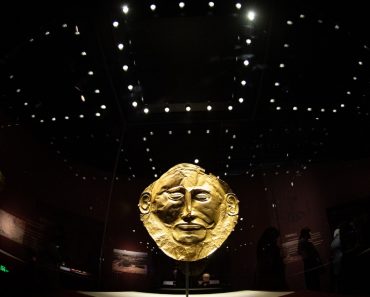
A massive sewage system that still works and is big enough to walk in has been discovered in the ancient Hellenistic city of Stratonikeia (Ancient Greek: Στρατoνικεια ), also known as the “City of Gladiators,” located in modern-day Muğla Province, Turkey.
The sewer dates back to more than 2,250 years ago, yet it has functioned properly since. This engineering marvel, along with other discoveries, is a testament to the advanced building capabilities of the ancient Romans.
The ancient City of Gladiators is an archaeological gold mine
According to ancient Greek Geographer Strabo, the ancient city of Stratonikeia was founded by the Seleucid king Antiochus I Soter (281–261 BC), a Greek ruler from the dynasty that emerged after the conquests of Alexander the Great. Antiochus named the city after his wife, Stratonice, which translates as “Victorious Army,” reflecting the Seleucids’ cultural and political legacy rooted in Alexander’s empire.
The city has been a treasure trove of archaeological discoveries. According to UNESCO, “Stratonikeia has been known as the city of eternal love and gladiators throughout the ages. It was a center where gladiators were trained, did demonstrations, and spent their life after retirement.”
The sewage system in the ancient City of Gladiators is just one of many but nonetheless extremely important due to the fact that it is still functioning after 2,250 years.
“Water is still flowing away [on its own] even after 2,250 years. That’s why we are incredibly happy,” said Dr. Bilal Söğüt, the head of the Stratonikeia Ancient City Excavation Team. “The discovery of the sewage system reveals the historical richness of the region and the lifestyle of ancient settlements.”
Söğüt noted the expertise of the ancient Romans in creating such an intricate sewage system. “All these sewage systems are connected to the streets and flow towards the stream, discharging without causing any discomfort to the city,” the expert stated, adding, “The discovery of the sewage system reveals the historical richness of the region and the lifestyle of ancient settlements.”
The archaeological site where the sewers were found is home to some of the most insightful and educational ruins of the ancient Greeks, along with the Roman and Byzantine empires. In addition to the ancient Roman sewage systems, the same team of archaeologists found 3,000-year-old artifacts in an ancient Greek temple in what was once the ancient city of Hekate.
📍 Muğla’da yer alan Lagina Hekate Kutsal Alanı’nda yürütülen kazı çalışmalarında, Hekate’nin sütuna işlemeli meşalesi ile MÖ 2. yüzyıla ait figürlü Korinth sütun başlığı gün yüzüne çıkarıldı.
Stratonikeia ve Lagina Kazı Heyeti Başkanı Prof. Dr. Bilal Söğüt, “Alandaki… pic.twitter.com/cXEIOxKxvc
— arkeolojihaber ® (@arkeolojihaber) December 6, 2024
Since 1977, archaeologists have consistently unearthed incredible ancient marvels which have been hidden away in the ruins of Stratonikeia. Dr. Yosef Busyal was the leader of the archaeological team there in 1977.
Since 2008, Söğüt has led a team of archaeologists in digging up and further exploring the ancient site. Over the past 47 years, Stratonikeia has yielded discovery after discovery. By 2021, for instance, more than 300 artifacts that had already been unearthed in the City of Gladiators.







